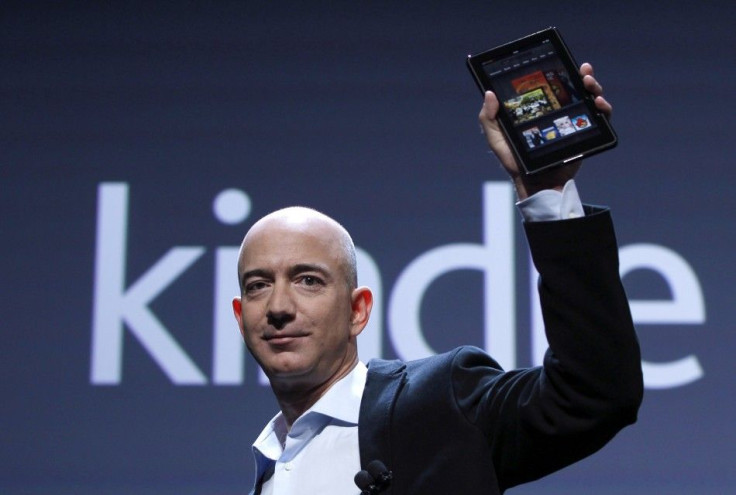Kindle Fire or iPad 2 - Which is the Best Holiday Gift?

With the online retail giant Amazon announcing shipments of its Kindle Fire tablet Monday, a day earlier than expected, it's surely going to be a top choice among consumers this holiday season along with Apple iPad 2.
Kindle Fire comes with a full-color 7-inch multi-touch IPS display, Dual-Core CPU, 8 GB Internal Memory, Wi-Fi functionality, and offers up to eight hours of battery life at $199.00.
Although both Kindle Fire and iPad 2 are quite different devices, the consensus is that it's an unyielding surrogate to iPad 2 for some environments. Potential tablet buyers, therefore, should be aware of the differences and similarities of both the products and how they stack up against each other before considering buying one.
Here is our take on the comparison of the two devices to help you decide which one you should take home.
The Hardware
There are customers who would like to go for iPad 2 with a larger 9.7-inch display (1024x768 resolutions), while many others will also opt for a smaller form-factor with Kindle Fire sporting a 7-inch display (1024x600 resolutions). If you are someone who likes to be mobile, Kindle Fire won't disappoint you. But if you prefer bigger screen for reading magazines and watching movies, iPad 2 will serve you better.
Considering weight, you should feel much comfortable holding a 0.91 pounds (414g) Kindle Fire than a 1.33 pounds (601g) iPad 2. However, when it comes to thickness, Kindle Fire lags behind with 0.45 inch, compared to iPad 2, which is 0.34 inches thick.
Android 2.3.4 (Gingerbread) vs. iOS 5
Kindle Fire is running a fairly customized version of the Android 2.3.4 (Gingerbread). According to PCMAG, the customization is really good news for non-geeks, but it is still hard to say whether this modification will make it better than the iOS 5 that runs on iPad 2.
Yes, Android is very delightful considering its open-ended nature, but for a number of people it's too open-ended as well. iOS looks more mature platform in this regard, and according to Geek.com, features like notifications, iMessage, and iCloud only sweeten the pot.
Apps Store
Start Kindle Fire, and you'll be greeted by seven words - Newsstand, Books, Music, Video, Docs, Apps, and Web. Each of them will offer you a virtual bookshelf of items stored on the device and a link to Amazon's relevant store. It won't support the Android Market.
iPad 2 supports the Apple App Store, which is considerably greater than that of the Amazon. It has over 100,000 apps tailored specifically for iPad, so without any doubt, the App Store is a clear winner.
Power and Storage
Kindle Fire is powered by a dual-core 1GHz TI OMAP processor. It comes with 512 MB of RAM and a mere 8 GB of storage, of which about six and a half will be available to users for their multimedia collection. Boasting a dual-core 1GHz A5 processor and 512 MB of RAM, iPad 2 has more space to offer. It is available with 16 GB, 32 GB and 64 GB of storage. Consumers who have a lot of video, music and other content to store are very likely to think seriously about choosing iPad 2 over Kindle Fire.
The Price Tag
Kindle Fire will attract customers with its lucrative price tag - just $199, compared to iPad 2's cost that starts from $499 and goes up to $829. For sure, customers will get more with iPad 2, but Kindle Fire's cheap price tag definitely makes it an easy and affordable entry point.
Camera
If you don't want to capture photos and don't want to video chat with your friends, Kindle Fire is not a problem. But if you want a camera on your tablet, it will be a big disappointment. Possibly to keep the price tag at $199, Amazon didn't include any camera in the device.
iPad 2, on the other hand, features both a front camera and a rear-facing camera. So if you love to snap photos and do video chats, the Apple tablet is the way to go.
Cloud Storage
Kindle Fire comes with free cloud storage for all Amazon content. Users can store content in the cloud, stream music from the Web and use the device's Silk browser, which relies upon Amazon's Elastic Compute Cloud for Web surfing. Users can also store non-Amazon files, too, but they will only get 5 GB; upgrading to 20 GB costs $20 per year. Considering only 6.5GB of free, onboard storage, the cloud storage is very important.
iPad 2 comes with iCloud, allowing users to store music, photos, documents, apps and more. It allows users to sync content across multiple devices. Although it's hard a clear deciding line between the devices in terms of cloud storage, Kindle Fire seems to have a slightly upper hand.
Wi-Fi Connectivity
Both Kindle Fire and iPad 2 are capable of connecting to the Web via Wi-Fi. But iPad 2 also supports 3G connectivity on both AT&T's and Verizon's networks, while Amazon's tablet doesn't support 3G or 4G networking. Lack of 3G connectivity can be a real issue for many customers.
Battery Life
According to Amazon, Kindle Fire allows eight hours of continuous reading or 7.5 hours of video playback with wireless off, which means wireless usage will affect the battery life even further. Apple iPad 2 wins out convincingly in this regard, as it can muster 10 hours of battery life even while surfing the Web, with WiFi on.
MUST READ: Amazon Kindle Fire: The 'People's Tablet' is 'Less Versatile', Sold at a Loss
© Copyright IBTimes 2024. All rights reserved.












